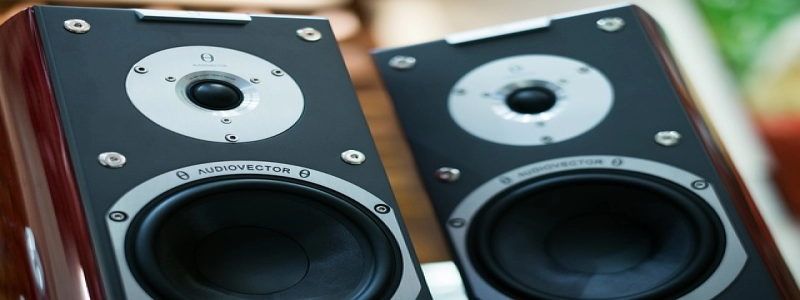RJ45 to SFP+ Transceiver: An Overview
Introduction
1.1 What is an RJ45 to SFP+ Transceiver?
1.2 Importance and Applications
Section 1: Understanding the RJ45 to SFP+ Transceiver
1.1 RJ45 Connector
1.1.1 Description and Function
1.1.2 Types of RJ45 Connectors
1.2 SFP+ Connector
1.2.1 Description and Function
1.2.2 Types of SFP+ Connectors
Section 2: Working Principle of the RJ45 to SFP+ Transceiver
2.1 Signal Conversion
2.2 Data Transmission
2.3 Compatibility and Interoperability
Section 3: Advantages of Using RJ45 to SFP+ Transceivers
3.1 High-Speed Data Transmission
3.2 Versatility and Flexibility
3.3 Cost-Effectiveness
3.4 Easy Installation and Maintenance
Section 4: Applications of RJ45 to SFP+ Transceivers
4.1 Local Area Networks (LANs)
4.2 Data Centers
4.3 Telecommunication Networks
4.4 Industrial Ethernet Networks
Conclusion
Introduction:
1.1 What is an RJ45 to SFP+ Transceiver?
An RJ45 to SFP+ transceiver is a device that allows the conversion between RJ45 and SFP+ connectors. It enables the seamless integration of equipment with different connectors, allowing for efficient data transmission in various network setups.
1.2 Importance and Applications:
The RJ45 to SFP+ transceiver plays a crucial role in networking scenarios where there is a need to interface devices using different connectors. It finds wide applications in local area networks (LANs), data centers, telecommunication networks, and industrial Ethernet networks.
Section 1: Understanding the RJ45 to SFP+ Transceiver
1.1 RJ45 Connector:
1.1.1 Description and Function:
The RJ45 connector is a standardized connector commonly used for Ethernet connections. It allows the transmission of data through twisted pair cables, facilitating communication between network devices.
1.1.2 Types of RJ45 Connectors:
There are various types of RJ45 connectors, including RJ45-CAT5, RJ45-CAT6, and RJ45-CAT7, each designed for specific data transmission speeds and cable types.
1.2 SFP+ Connector:
1.2.1 Description and Function:
The SFP+ connector, also known as Small Form-factor Pluggable Plus, is a compact and hot-pluggable interface commonly used in high-speed network applications. It supports data rates of up to 10 Gbps and provides a flexible solution for connecting devices.
1.2.2 Types of SFP+ Connectors:
SFP+ connectors come in different types, such as SFP+ Direct Attach Copper (DAC) cables and SFP+ optical transceivers. These connectors offer various options for network connectivity depending on the distance and cable types involved.
Section 2: Working Principle of the RJ45 to SFP+ Transceiver
2.1 Signal Conversion:
The RJ45 to SFP+ transceiver acts as an intermediary between devices with different connectors. It converts electrical signals from RJ45 connectors into optical signals that can be transmitted over SFP+ connectors, or vice versa, enabling seamless data transmission.
2.2 Data Transmission:
The transceiver ensures reliable and high-speed data transmission between devices, maintaining signal integrity and minimizing data loss during the conversion process. It ensures compatibility and interoperability between devices with different connector types.
2.3 Compatibility and Interoperability:
RJ45 to SFP+ transceivers are designed to be compatible with a wide range of devices and network configurations. They support multiple protocols, including Ethernet, Fibre Channel, and InfiniBand, allowing for seamless integration in various networking environments.
Section 3: Advantages of Using RJ45 to SFP+ Transceivers
3.1 High-Speed Data Transmission:
The use of SFP+ connectors enables high-speed data transmission rates of up to 10 Gbps, providing fast and efficient communication between network devices.
3.2 Versatility and Flexibility:
With the ability to convert between RJ45 and SFP+ connectors, the transceiver offers versatility and flexibility in connecting different devices. It allows for easy integration of equipment with varying connector types, providing greater scalability in network setups.
3.3 Cost-Effectiveness:
RJ45 to SFP+ transceivers eliminate the need for expensive equipment upgrades or cable replacements when connecting devices with different connectors. It allows organizations to leverage existing infrastructure and save on costs.
3.4 Easy Installation and Maintenance:
The transceiver’s plug-and-play design ensures easy installation and maintenance. It can be easily inserted or removed, minimizing downtime and simplifying network management tasks.
Section 4: Applications of RJ45 to SFP+ Transceivers
4.1 Local Area Networks (LANs):
RJ45 to SFP+ transceivers are widely used in LAN setups to enable the connection between network switches, routers, and servers. They help in facilitating high-speed and reliable communication within the LAN.
4.2 Data Centers:
In data center environments, where high-speed connectivity is crucial, the transceivers allow for seamless integration of different network equipment. They enable the transmission of data between servers, storage devices, and network switches, ensuring efficient data flow.
4.3 Telecommunication Networks:
Telecommunication networks often utilize RJ45 to SFP+ transceivers to connect various network devices, including routers and switches. The transceivers provide fast and reliable data transmission, ensuring smooth communication within the network.
4.4 Industrial Ethernet Networks:
In industrial environments, where harsh conditions may exist, the transceivers play a vital role in connecting diverse devices and ensuring continuous operation. They enable reliable communication between industrial Ethernet equipment, facilitating efficient processes and data flow.
Conclusion:
RJ45 to SFP+ transceivers serve as crucial components in network setups, allowing for smooth data transmission between devices with different connectors. Their versatility, high-speed capabilities, and easy installation make them an essential solution for various applications, including LANs, data centers, telecommunication networks, and industrial Ethernet networks.








